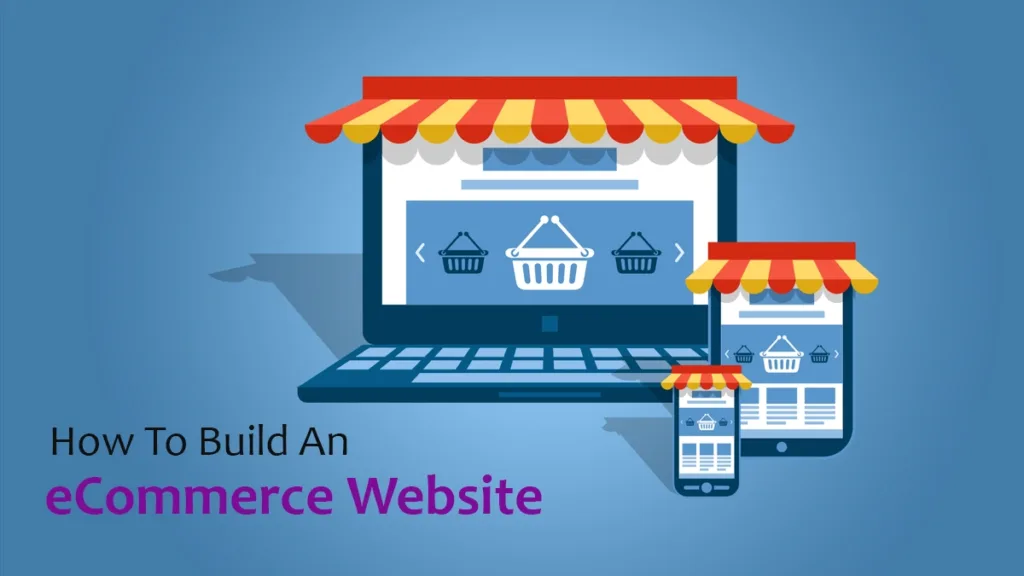In 2023, eCommerce is expected to become a trillion-dollar industry. This means that there has never been a better time to launch your eCommerce website. If you’re looking for a comprehensive guide on how to build an eCommerce website, you are in the right place. Building an eCommerce website may seem daunting at first, but with the right tools and a bit of know-how, you can create a seamless and user-friendly shopping experience for your customers. In this post, we will guide you through the process of building an eCommerce website, from the initial steps to launch.
Define Your eCommerce Website’s Purpose and Goals
Before you dive into the process of building an eCommerce website, you need to have a clear idea of what your website will be selling, why you want to sell it, and who you want to sell it to. Do your research, assess your market, and define your target audience. Once you have a clear idea of your website’s purpose and goals, you can design your website and pick the features that will best serve your interests.
Pick an eCommerce Platform
Once you have a clear understanding of your website’s purpose and goals, it’s time to choose an eCommerce platform. There are several platforms available, each with its own set of features and functionalities. Shopify, Magento, WooCommerce, and BigCommerce are some of the most popular eCommerce platforms available. Assess the features of each platform and pick the one most suitable for your business.
Design Your eCommerce Website
Once you’ve chosen your eCommerce platform, it’s time to design your website. To create a user-friendly and visually appealing website, invest in a good web designer or use pre-made templates provided by your eCommerce platform. Be sure to include an “About Us” page, contact information, and a product catalog, and prioritize ease of navigation.
Set Up Payment Processing and Shipping
To ensure a seamless shopping experience, set up payment processing, and shipping options on your eCommerce website. Popular payment processing options include PayPal, Stripe, and Authorize.Net while popular shipping options include USPS, FedEx, and UPS. Make sure you choose the best payment and shipping options that will work best for your business.
Launch Your eCommerce Website
Once you’ve completed all previous steps, it’s time to launch your eCommerce website. Before launch, test your website thoroughly, and ensure that everything works perfectly. Launch your website on a day and time that aligns with your target audience’s schedule. Use social media platforms and digital marketing strategies to create buzz around your website and drive traffic to it.
Manage & Optimize Your eCommerce Website
Once you have launched your website, it’s important to ensure that it continues to perform optimally. Monitor user behavior, track website analytics and use insights to improve the customer experience. Invest in SEO and digital marketing strategies to drive more traffic to your website and optimize it for conversions.
Monitor Performance & Analyze Insights
Monitoring the performance of your website and tracking analytics is important to ensure that you are meeting your goals. Keep track of metrics such as web traffic, conversion rate, average order value, and customer retention. Analyze insights from these metrics to understand customer behavior better and make informed decisions about the future of your eCommerce website.
Market Your eCommerce Website
Once your website is up and running, you need to start marketing it. Leverage digital marketing strategies such as SEO, email campaigns, content marketing, and social media ads to increase visibility and reach your target audience. Also, consider using influencer marketing to promote your website – you can partner with influencers in your niche to create buzz for your eCommerce website.
Utilize Automation & AI
In 2023, automation and artificial intelligence (AI) are expected to play a major role in the eCommerce industry. Invest in automation tools to streamline various processes such as customer support, inventory management, and order fulfillment. AI-powered chatbots can also help provide personalized customer service and increase customer satisfaction.
Grow Your eCommerce Website
Growing your eCommerce website requires a lot of hard work and dedication. To keep customers engaged, offer personalized discounts and rewards, launch loyalty programs, and provide educational content. Invest in quality customer service and focus on creating a positive user experience.
Stay Up-to-Date with Trends and Regulations
The eCommerce industry is constantly evolving, so you need to stay up-to-date with the latest trends and regulations. Monitor changes in the industry and stay ahead of your competitors with data-driven insights.
Invest in Security & Data Protection
Security and data protection are essential components of any successful eCommerce website. Invest in secure payment processing solutions, encrypt customer data, and update your website regularly with the latest security patches. Make sure your customers feel safe shopping on your website by displaying a secure payment badge or seal.
Building an eCommerce website may seem daunting, but with the right tools, it can be an exciting and rewarding process. Define your website’s purpose, pick an eCommerce platform, design your website, set up payment processing and shipping, and launch your website. By following these steps, you can create a user-friendly and seamless shopping experience for your customers while developing your brand. In conclusion, it’s never been a better time to launch your eCommerce website.

